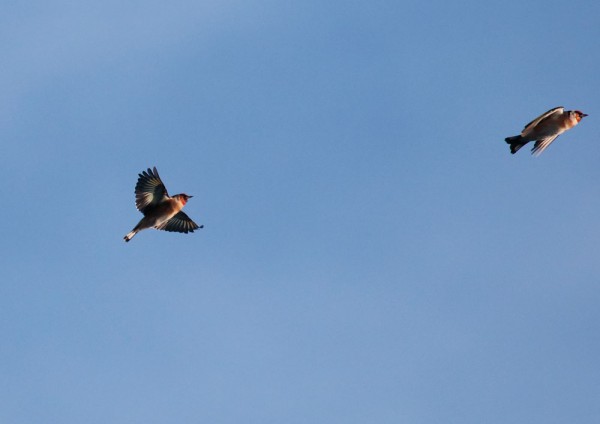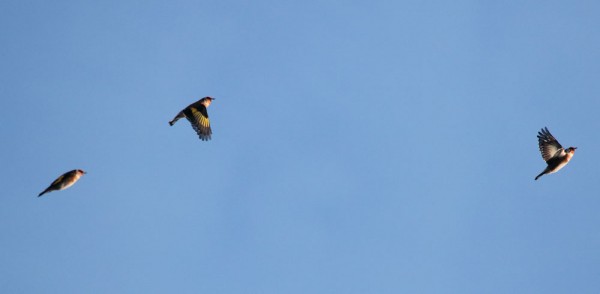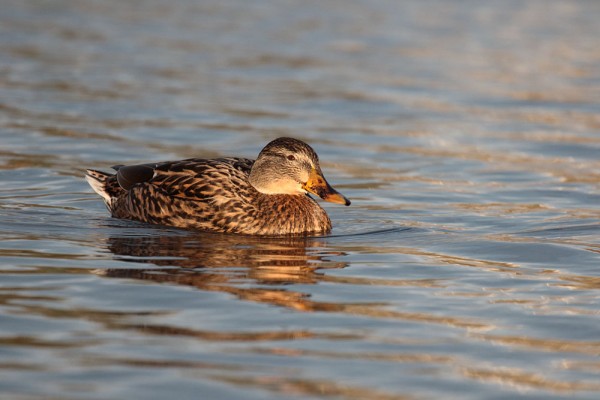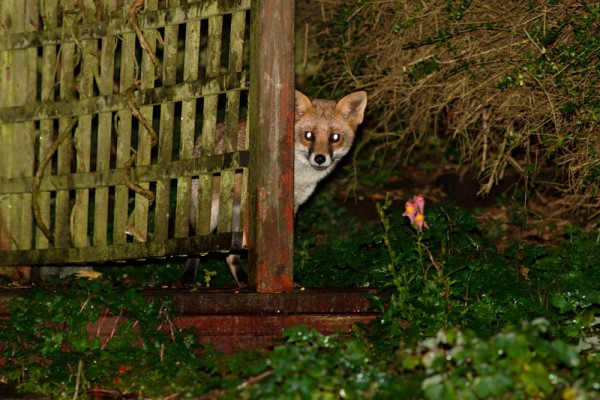These are a long way from being the best photos of goldfinches you’re likely to see, but they are a great illustration of the very sophisticated auto-focus settings on the 7D Mark II. The flock came in quickly, passed overhead and disappeared. Maybe 7 or 8 birds in total. It’s absolutely the kind of shot that I would have missed with the old camera.
I had the camera AF mode set on the ‘Case 6’ setting which is ‘for subjects that change speed and move erratically’. The AF area covered all 65 points, and the setting means that the camera will track movement and automatically select the correct focusing point from among the 65 available. Both these shots are heavily cropped.
I managed around a dozen shots in a burst, all with birds in focus. This bodes extremely well for the annual summer challenge of photographing swallows and swifts, and possibly even dragonfly.
Photographing ducks lazing on the water is altogether easier. It was nice light though, so I couldn’t resist this lady.
The last shot this evening is a fox. Finally. Just one frame, taken this evening in drizzle.
Camera note: bird photos taken with the Canon 7D Mark II and EF 100-400mm f/4.5-5.6L USM IS lens. Fox photographed with the EF 200mm f/2.8L II USM lens.




Darko
12 Nov 2014Ah, I could really use that auto focusing option. Yesterday, I tried to make a photo of a small bird that stood on a rock made made a lot of small and fast movements, plus the light was insufficient. Tried several times but got blurry images all the time. If there was enough light it might have been better…
Words
13 Nov 2014Darko, the light (and shutter speed) is always key. You may have to push the ISO up and also slightly under-expose (using the exposure compensation) to get something fast enough.
Darko
15 Nov 2014Yes, I was having different settings on, for a more sunny surrounding but then that bird was in a shadow, moving frantically from one side of the rock to the other. Having dark grey feathers didn’t help at all 🙁
Words
16 Nov 2014Darko, probably the quickest way to adjust exposure (without losing the shutter speed) is to use negative exposure compensation (page 101 of the manual). A little bit negative exposure (1/3rd) is also pretty good for bringing out colours if the background is dark. A lot of the time I’m at -1.0 or more if I’m photographing the white ducks against the woodland backdrop.